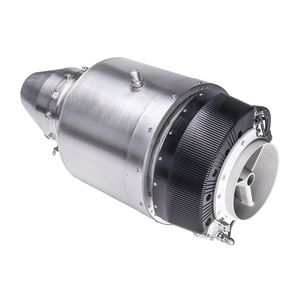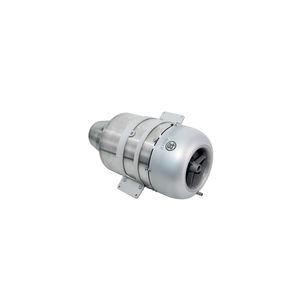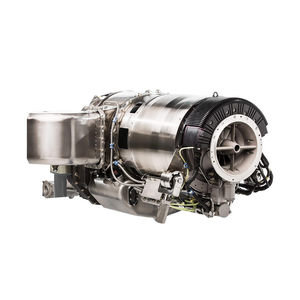
- Components - Spare Parts
- Engine Power
- 0 - 100kN turbojet
- PBS VELKA BITES
0 - 100kN turbojet TJ100 0 - 100kgfor dronesfor light aircraft

Add to favorites
Compare this product
fo_shop_gate_exact_title
Characteristics
- Thrust
- 0 - 100kN
- Dry weight
- 0 - 100kg
- Applications
- for drones, for light aircraft
Description
The PBS TJ100 jet engine was developed for unmanned aerial vehicles (UAVs), target drones, light sport aircraft and gliders with an additional engine.
Compact design
Excellent thrust-to-weight ratio, low power consumption
The built-in starter-generator allows a reliable start, power supply to the deck network and engine cooling when standing still
Modification according to customer's wishes (adjustment of hinges, the length of the outlet nozzle, possibility of landing on water)
The PBS TJ100 is the most popular of PBS's turbojet engines. It has achieved worldwide success, having been sold in over 40 countries. It is currently in use in over 1,000 applications around the globe and continues to bring great pride to the company. The turbojet engine is sought after for its compact design and excellent thrust-to-weight ratio as well as its ability to restart on the ground or in-flight and has the possibility of salt water recovery.
According to PBS standards, the PBS TJ100 is constantly being innovated and has even inspired new developments such as PBS TJ150 (the most powerful turbojet engine from PBS). All aircraft engines are built and measured using 3D measurement of parts and assemblage.
Its advantage is its compact design, low weight with a thrust of up to 1,250 N, and low fuel consumption in the given power category. The generator output is 750 W. One of the PBS TJ100 jet engine versions enables landing on water. The PBS TJ100 engine is a single-shaft small jet engine consisting of a radial compressor, radial and axial diffuser, annular combustion chamber, axial turbine and a fixed outlet nozzle.
VIDEO
Catalogs
Related Searches
*Prices are pre-tax. They exclude delivery charges and customs duties and do not include additional charges for installation or activation options. Prices are indicative only and may vary by country, with changes to the cost of raw materials and exchange rates.













